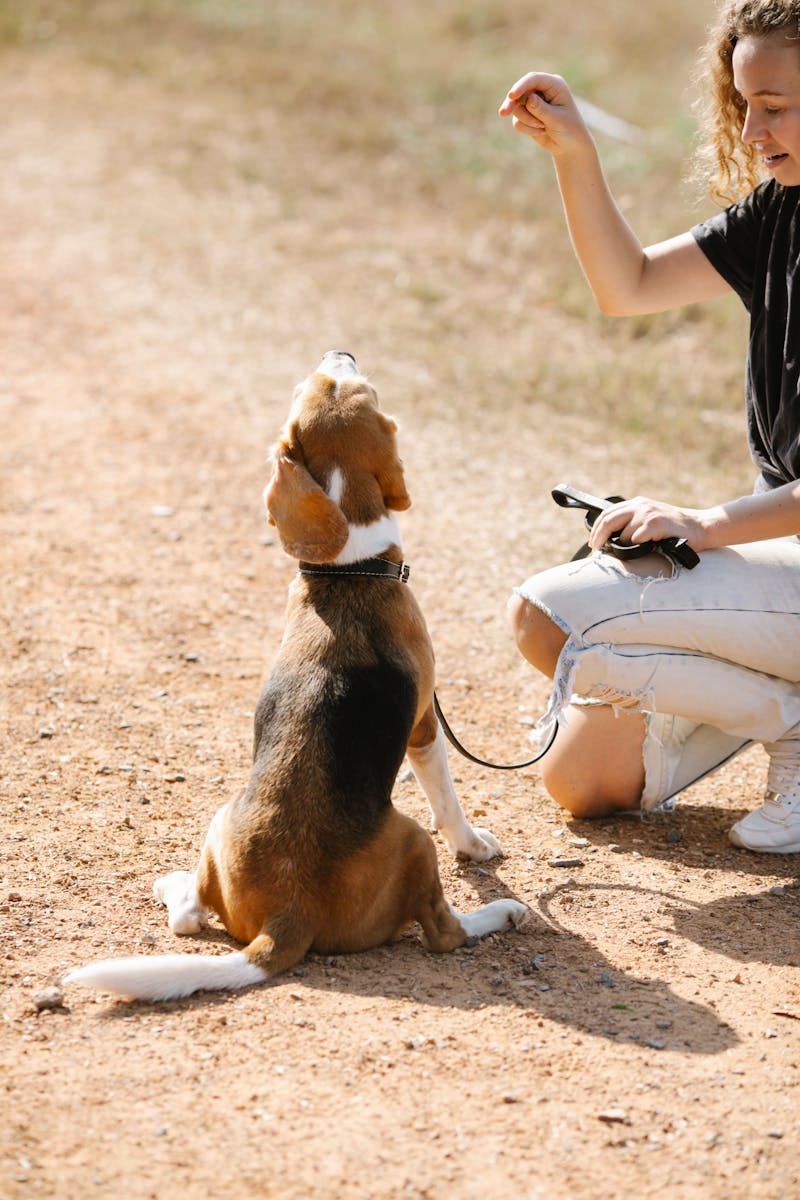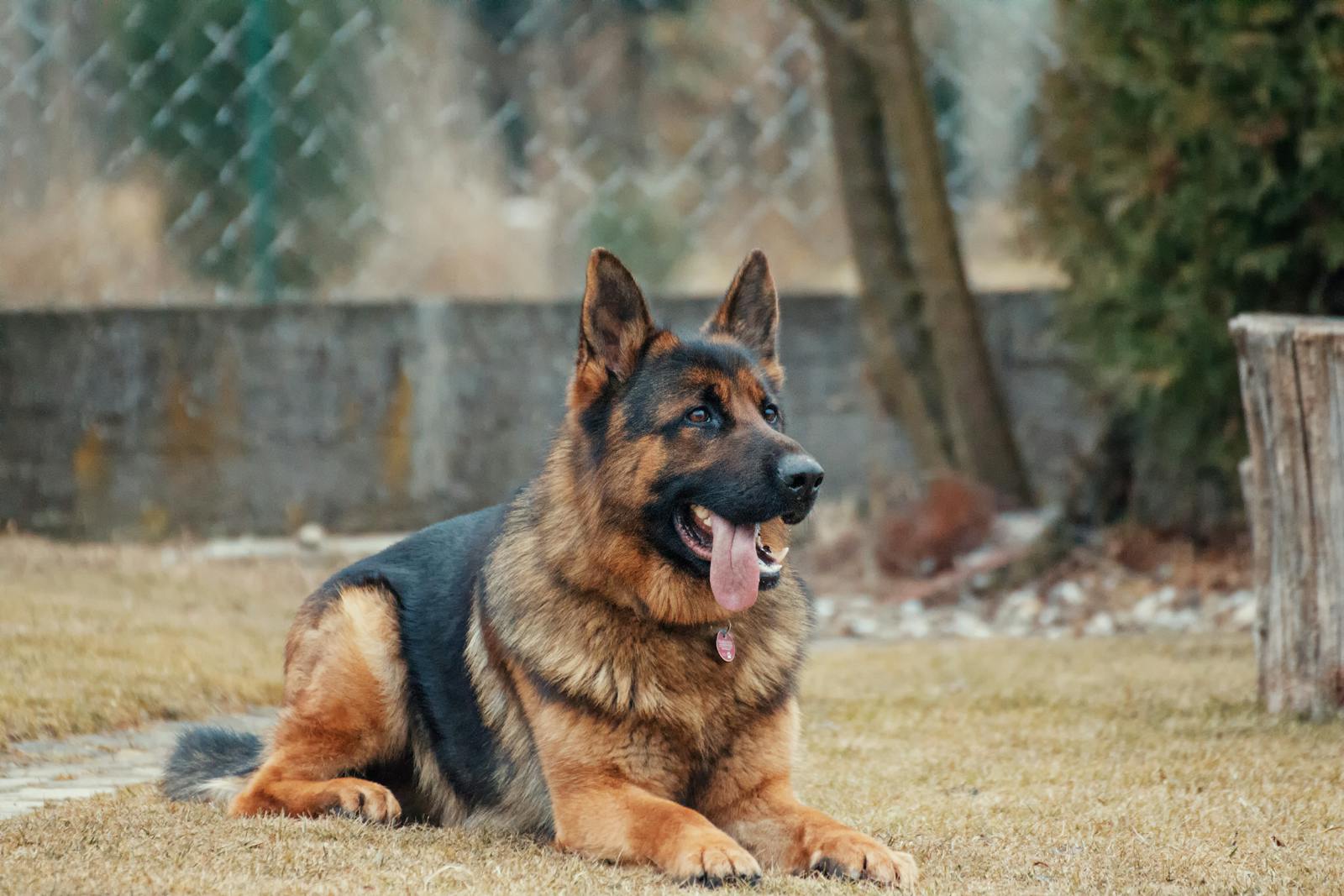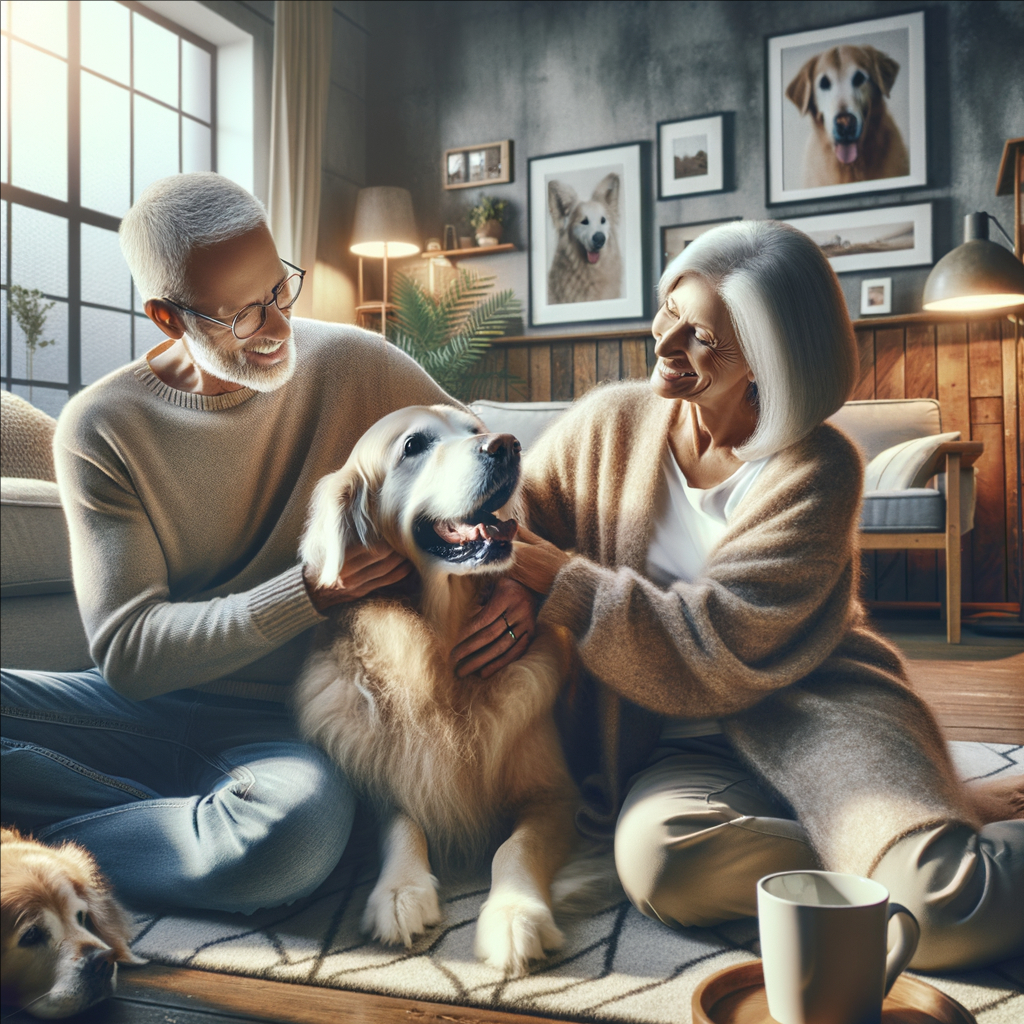The Role of Canine Learning and Behavior
The Importance of Canine Learning: Unlocking the Secrets of Dog Training
Understanding how dogs learn is more than a mere curiosity—it’s the cornerstone of effective training and fosters a deeper bond between humans and their canine companions. By grasping the mechanisms behind canine learning, pet owners, trainers, and behaviorists can tailor their approaches to achieve not only obedience but also a positive relationship built on trust and respect. In this blog post, we will delve into the significance of canine learning, explore various learning theories, and discuss their implications for training our furry friends.
Why Understanding Canine Learning Matters
Canine behavior is influenced by several factors, including genetics, environment, and experience. However, the most direct way to shape a dog’s behavior is through learning. Here are several reasons why understanding how dogs learn is crucial:
- Effective Training Methods: Knowing the principles of how dogs learn helps owners and trainers select the most appropriate training methods, leading to faster and more enduring results.
- Improved Communication: Understanding canine learning promotes better communication between dogs and their owners. When owners convey cues that resonate with a dog’s learning style, it enhances mutual understanding.
- Stronger Bonds: A positive training experience built on understanding encourages trust and respect, fortifying the owner’s bond with their pet.
- Behavior Modification: Knowledge of learning principles aids in modifying undesirable behaviors, leading to more harmonious household dynamics and safer environments.
Now, let’s explore how dogs learn!
Canine Learning Theories Explained
When discussing how dogs learn, several theories come into play. Each theory sheds light on different aspects of canine behavior and is significant for effective training.
1. Classical Conditioning
This process, famously studied by Ivan Pavlov, involves associating a neutral stimulus with an unconditioned stimulus to elicit a conditioned response. Here’s how it works in canine training:
- Example: If every time you feed your dog you ring a bell, over time, your dog will associate the sound of the bell with food, and eventually, simply ringing the bell will trigger salivation and excitement.
- Application: Training cues can be associated with rewards (like treats or praise) to reinforce desired behaviors. For instance, when you say “sit,” and the dog sits and receives a treat, the dog begins to associate the word “sit” with the action of sitting.
2. Operant Conditioning
Operant conditioning, coined by B.F. Skinner, involves learning through consequences—where behaviors are strengthened or weakened by rewards or punishments. Here are some key components:
- Positive Reinforcement: This involves rewarding desired behaviors, which increases the likelihood of that behavior being repeated.
- Example: Giving your dog a treat when it comes to you when called reinforces that behavior.
- Negative Reinforcement: This involves removing an unpleasant consequence when the desired behavior occurs.
- Example: Releasing pressure on a leash when a dog walks beside you encourages them to maintain that behavior.
- Punishment: While punishment can deter unwanted behavior, it may lead to fear and anxiety. Positive methods are generally favored today.
3. Social Learning Theory
As social animals, dogs learn not only from direct experiences but also through observing others. This is akin to “modeling” behavior.
- Example: If a dog sees another dog receiving praise for sitting, it may mimic that behavior, hoping for similar rewards.
- Application: This theory underscores the importance of training methods that involve models—like older dogs or humans demonstrating behavior, which can accelerate the learning process.
4. Cognition and Problem-Solving Skills
Recent studies suggest that dogs possess cognitive abilities similar to those of a two-year-old human child. Dogs can analyze their environment, solve problems, and make decisions based on learned experiences.
- Example: If a dog learns that pushing a lever results in a toy being dispensed, it can critically analyze which actions yield results.
- Application: Enriching a dog’s environment with puzzles and problem-solving tasks can enhance cognitive function and improve learning capabilities.
Actionable Tips for Effective Canine Training
Now that we know the key theories of canine learning, let’s discuss practical tips for implementing these insights into training your dog:
- Use Positive Reinforcement: Whenever your dog exhibits desirable behavior, reward them immediately. Consistency is key. Keeping treats on hand ensures that you don’t miss opportunities to reinforce good behavior.
- Establish a Routine: Dogs thrive on predictability. Establishing a consistent training routine helps your dog learn and anticipate what’s expected of them.
- Be Patient and Stay Calm: Training takes time, and dogs can pick up on your emotions. Staying calm and patient will create a more effective learning environment.
- Make it Fun: Keep training light-hearted and engaging. Incorporating play into lessons helps motivate your dog, making it a rewarding experience for both of you.
- Consider Socialization Opportunities: Encourage social learning by exposing your dog to other well-trained dogs. This can demonstrate desired behaviors and social norms.
Conclusion
Understanding canine learning enhances not only our capacity to train dogs effectively but also deepens the bond we share with them. By embracing various learning theories—classical conditioning, operant conditioning, social learning, and cognitive skills—we can tailor our training strategies to suit the individual needs of our canine companions. As you embark on your dog training journey, remember: It’s an ongoing process that requires patience, consistency, and a genuine connection with your dog.

Canine Learning Theories Explained (Continued)
When discussing how dogs learn, several theories come into play. Each theory sheds light on different aspects of canine behavior and is significant for effective training.
1. Classical Conditioning
This process, famously studied by Ivan Pavlov, involves associating a neutral stimulus with an unconditioned stimulus to elicit a conditioned response. Here’s how it works in canine training:
- Example: If every time you feed your dog you ring a bell, over time, your dog will associate the sound of the bell with food, and eventually, simply ringing the bell will trigger salivation and excitement.
- Application: Training cues can be associated with rewards (like treats or praise) to reinforce desired behaviors. For instance, when you say “sit,” and the dog sits and receives a treat, the dog begins to associate the word “sit” with the action of sitting.
2. Operant Conditioning
Operant conditioning, coined by B.F. Skinner, involves learning through consequences—where behaviors are strengthened or weakened by rewards or punishments. Here are some key components:
- Positive Reinforcement: This involves rewarding desired behaviors, which increases the likelihood of that behavior being repeated.
- Example: Giving your dog a treat when it comes to you when called reinforces that behavior.
- Negative Reinforcement: This involves removing an unpleasant consequence when the desired behavior occurs.
- Example: Releasing pressure on a leash when a dog walks beside you encourages them to maintain that behavior.
- Punishment: While punishment can deter unwanted behavior, it may lead to fear and anxiety. Positive methods are generally favored today.
3. Social Learning Theory
As social animals, dogs learn not only from direct experiences but also through observing others. This is akin to “modeling” behavior.
- Example: If a dog sees another dog receiving praise for sitting, it may mimic that behavior, hoping for similar rewards.
- Application: This theory underscores the importance of training methods that involve models—like older dogs or humans demonstrating behavior, which can accelerate the learning process.
4. Cognition and Problem-Solving Skills
Recent studies suggest that dogs possess cognitive abilities similar to those of a two-year-old human child. Dogs can analyze their environment, solve problems, and make decisions based on learned experiences.
- Example: If a dog learns that pushing a lever results in a toy being dispensed, it can critically analyze which actions yield results.
- Application: Enriching a dog’s environment with puzzles and problem-solving tasks can enhance cognitive function and improve learning capabilities.
Actionable Tips for Effective Canine Training
Now that we know the key theories of canine learning, let’s discuss practical tips for implementing these insights into training your dog:
- Use Positive Reinforcement: Whenever your dog exhibits desirable behavior, reward them immediately. Consistency is key. Keeping treats on hand ensures that you don’t miss opportunities to reinforce good behavior.
- Establish a Routine: Dogs thrive on predictability. Establishing a consistent training routine helps your dog learn and anticipate what’s expected of them.
- Be Patient and Stay Calm: Training takes time, and dogs can pick up on your emotions. Staying calm and patient will create a more effective learning environment.
- Make it Fun: Keep training light-hearted and engaging. Incorporating play into lessons helps motivate your dog, making it a rewarding experience for both of you.
- Consider Socialization Opportunities: Encourage social learning by exposing your dog to other well-trained dogs. This can demonstrate desired behaviors and social norms.
Conclusion
Understanding canine learning enhances not only our capacity to train dogs effectively but also deepens the bond we share with them. By embracing various learning theories—classical conditioning, operant conditioning, social learning, and cognitive skills—we can tailor our training strategies to suit the individual needs of our canine companions.
As you embark on your dog training journey, remember: It’s an ongoing process that requires patience, consistency, and a genuine connection with your dog.

Canine Behavior Basics: Understanding Innate Instincts and Training
When it comes to shaping a dog’s behavior, one of the most important keys is understanding their innate instincts. Dogs are not only influenced by their environment and experiences but are also guided by instincts evolved over thousands of years. Recognizing these instincts can profoundly improve training approaches, fostering better communication and cooperation between you and your canine companion. Let’s delve into the foundations of canine behavior, the innate instincts at play, and practical insights on how to leverage this understanding for effective training.
The Innate Instincts that Govern Dog Behavior
Understanding canine behavior begins with recognizing the instincts that drive dogs’ actions. Here are some key instincts:
- Pack Mentality
- Dogs are social animals that thrive in a pack environment, which influences their behavior and interactions with humans and other dogs. Their pack mentality stresses the importance of hierarchy, relationships, and cooperation.
- Application: Training should emphasize your role as a leader in a positive way. Establishing yourself as a trusted guide can help your dog feel secure and follow your commands more willingly.
- Prey Drive
- Many dogs have a strong instinct to chase and hunt prey, stemming from their ancestral roles as hunters. This instinct varies widely among breeds.
- Application: Channel this drive into engaging activities, such as fetch or scent work. Rather than suppressing the instinct, provide healthy outlets to satisfy your dog’s natural behaviors.
- Territoriality
- Dogs naturally protect their home and possessions. This territorial nature can lead to behaviors such as barking and guarding.
- Application: Use desensitization techniques to help your dog adjust to various stimuli and reduce reactivity. Gradually introduce them to new people and situations, rewarding calm behavior to reinforce positive associations.
- Socialization
- Social instincts encourage interaction with other dogs and humans. Puppies learn critical social cues from their mothers and littermates, which shape their behavior as adults.
- Application: Proper socialization during the early stages of life is crucial. Expose your dog to various environments, sounds, and other animals to build confidence and reduce anxiety later on.
- Learning Through Experience
- Dogs have the remarkable ability to learn through experience and adapt based on previous encounters. Their instincts guide them in these situations, whether it’s avoiding something that caused pain or approaching a person who offered treats.
- Application: Reinforce positive experiences through praise and rewards. Encouraging desired actions will strengthen the bond and compliance between you and your dog.
Leveraging Instincts for Effective Training
Now that we’ve explored the foundational instincts governing canine behavior, let’s discuss how you can apply this knowledge to improve your training approach effectively.
- Use Natural Drives to Your Advantage
- Engaging your dog’s natural instincts rather than trying to suppress them can lead to more successful training. For example, if your dog has a high prey drive, engaging them in activities that mimic hunting can provide an outlet for that drive.
- Tip: Incorporate games like hide-and-seek or treat-searching that stimulate your dog’s mind while allowing them to satisfy their instincts.
- Establish a Routine and Structure
- Dogs thrive in environments where they understand what to expect. Establishing a daily routine helps dogs feel secure and know when it’s time to train, eat, and play.
- Tip: Consistently scheduled training sessions and walks enhance the predictability of your dog’s day-to-day life, leading to better behavior.
- Utilize Positive Reinforcement
- As we’ve noted in prior sections, positive reinforcement is essential in canine training. This technique aligns beautifully with a dog’s instincts, making training feel less like a chore and more like a game or fun interaction.
- Tip: Use high-value treats when teaching new commands or behaviors, particularly in situations where distractions abound. This reinforces their learning and keeps them engaged.
- Be Patient and Observant
- Acknowledge that every dog has unique instincts and personalities that influence how they learn and respond. Being patient allows you to observe what works best for your dog and make adjustments accordingly.
- Tip: Keep a training journal to track your dog’s progress and note which techniques resonate better. This will help you refine your training methods over time.
- Encourage Interaction with Other Dogs
- Social learning is powerful; other dogs can often teach valuable lessons that promote better behavior and social skills.
- Tip: Attend group training classes or dog parks to stimulate your dog’s need for social interaction, helping them learn valuable skills through observation and engagement with their peers.
Conclusion
By understanding the innate instincts that govern canine behavior, pet owners and trainers can tailor their approaches to training effectively. Whether it’s harnessing a dog’s prey drive, appreciating their pack mentality, or facilitating socialization, leveraging these natural behaviors fosters a deeper bond between humans and their furry friends.
As you embark on your training journey with your dog, remember to be patient, use positive reinforcement, and remain observant of your pup’s unique personality.
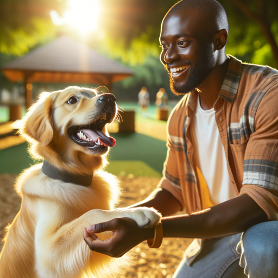
The Role of Socialization: The Impact of Early Socialization on a Dog’s Development and Behavior
Once we grasp how dogs learn, understanding the role of socialization becomes paramount in shaping a happy, well-adjusted pet. Early socialization significantly impacts a dog’s development, behavior, and overall quality of life. By exposing puppies to various experiences, both positive and negative, we set the stage for a confident, adaptable adult dog. In this segment, we will explore the critical socialization window, its lasting effects, and actionable insights on effective practices for socializing your dog.
Understanding the Critical Socialization Window
The critical socialization window for puppies is generally between three weeks and sixteen weeks of age. During this period, a puppy’s brain is highly plastic, meaning it is more receptive to learning, adapting, and forming lasting associations. Here’s why this window is so crucial:
- Optimal Learning Environment: Puppies are naturally curious, and their experiences during this period lay the foundation for how they’ll react to the world around them.
- Fear Prevention: Introducing puppies to a variety of stimuli—people, other pets, sounds, and environments—helps them develop positive associations, thereby reducing the likelihood of fearfulness or aggression in adulthood.
- Behavioral Benchmarking: Puppies learn social norms and communication cues through interactions with other dogs. This helps develop proper play behavior and impulse control, which are essential traits for a well-mannered adult dog.
The Lasting Effects of Socialization
The experiences and learning opportunities your puppy has during socialization can lead to significant and lasting effects on behavior. Dogs that miss this critical period may face various challenges later in life, such as:
- Fear-Based Behaviors: Adult dogs that have not been adequately socialized may react out of fear or anxiety when encountering unfamiliar situations or individuals, leading to unwanted behaviors such as barking, growling, or aggression.
- Inability to Adapt: Socialized dogs are generally more adaptable to new experiences. A lack of exposure can result in a dog that struggles with changes in routine or environment.
- Compromised Relationships: Well-socialized dogs tend to have better relationships with both humans and other animals, enhancing their ability to thrive in family environments and public settings.
Actionable Socialization Tips for Puppy Owners
Completing the socialization imperative begins with action! Here are some actionable tips to effectively socialize your puppy:
- Start Early: Begin socializing your puppy as soon as you bring them home. Realize that this is a critical time in their development, and every experience counts.
- Expose Them to Various Environments: Take your puppy to a wide range of settings—parks, pet stores, and crowded streets. Expose them to different surfaces, noises, people, and situations to enhance their comfort level.
- Participate in Puppy Classes: Enroll your puppy in a well-structured puppy kindergarten class. This is not just a place to learn commands, but a controlled environment to meet other puppies and people.
- Use Positive Reinforcement: Reward your puppy for exhibiting calm behavior in various situations. Use treats, praise, or playtime to reinforce positive experiences, ensuring that socialization remains a happy occurrence.
- Supervise Interactions: When meeting other dogs or people, always supervise and ensure the interaction remains positive and safe. This helps prevent negative experiences that could lead to fear or anxiety.
Real-World Examples of Successful Socialization
Several real-world stories highlight the importance of early socialization:
- Case Study – Duke: A rescue dog named Duke had minimal socialization during his first few months, leading to severe anxiety around new people. After participating in a specialized training program focusing on gradual exposure to various social settings, his anxiety diminished significantly, allowing him to forge healthy relationships with both people and other dogs.
- Case Study – Bella: Bella, a golden retriever, was socialized from a young age by visiting local dog parks and engaging with diverse breeds. As an adult, she became a certified therapy dog, comfortably interacting with children at schools and residents at nursing homes. Her extensive and positive socialization experiences were key to her adaptability.
Conclusion
Socialization plays a pivotal role in a dog’s early development, dictating behaviors that last through their adult lives. By understanding the critical socialization window and implementing effective socialization strategies, we pave the way for our puppies to grow into well-adjusted, confident dogs. Remember, socialization isn’t merely a phase—it’s an ongoing journey.

Positive Reinforcement Training: Unleashing the Power of Rewarding Desirable Behaviors in Dogs
When it comes to dog training, positive reinforcement stands out as one of the most effective methods. This strategy is rooted in the principle of operant conditioning, which suggests that behaviors that are rewarded tend to be repeated. Let’s take a closer look at how positive reinforcement works, its effectiveness, and actionable techniques to implement this method into your dog training routine.
Understanding Positive Reinforcement
Positive reinforcement involves presenting a motivating item or stimulus after a desired behavior is exhibited, making that behavior more likely to happen in the future. This approach focuses on rewarding good behavior rather than punishing undesired actions. Unlike punishing techniques, which can lead to fear or anxiety in dogs, positive reinforcement fosters a more trusting and joyful relationship between dog and owner.
Key Benefits of Positive Reinforcement
- Strengthens Bonding: This training method promotes a supportive and engaging environment. As dogs associate training sessions with rewards, they build trust in their handlers.
- Encourages Consistency: By rewarding specific behaviors, you create clear expectations for your dog. This consistency leads to faster learning and behavior modification.
- Promotes Willingness to Learn: When training is perceived as a fun and rewarding experience, dogs are more eager to participate. This results in improved attention and focus during training sessions.
### Effective Positive Reinforcement Techniques
Implementing positive reinforcement requires creativity and adaptability. Here are some effective techniques that can help bolster desirable behaviors in your canine companion:
1. Treats as Rewards
Using high-value treats that your dog loves is a classic and effective method for positive reinforcement. When your dog performs a desired behavior, such as sitting or staying, immediately reward them with a treat.
- Tip: Start with small, soft treats that are easy to consume quickly so your dog can remain focused on training rather than chewing.
2. Verbal Praise and Affection
Verbal reinforcement, such as enthusiastic praise (“Good boy!” or “Well done!”), mixed with affection, can significantly enhance your dog’s motivation. Dogs naturally respond to positive tones and emotional connectivity from their handlers.
- Example: When teaching your dog to come when called, celebrate their return with excited praise and a belly rub for immediate positive feedback.
3. Clicker Training
Clicker training is a systematic method of positive reinforcement that uses a click sound to mark desirable behaviors. Pairing the click with a reward helps your dog understand exactly what behavior is being rewarded.
- Application: If you’re teaching your dog to roll over, click as soon as they perform the action and follow quickly with a treat. This method provides clear and immediate feedback.
4. Play as a Reward
For many dogs, playtime is the ultimate reward! A game of fetch, tug-of-war, or any activity that excites your dog can serve as an excellent form of positive reinforcement.
- Tip: Incorporate play during training breaks. For instance, if your dog successfully learns a new command, reward them with a brief play session to celebrate their success.
5. Gradual Redirection
If your dog exhibits an undesirable behavior, rather than punishing them, redirect their attention to a preferred behavior, and reinforce that with a reward. This technique encourages learning without fear or anxiety.
- Example: If your dog starts jumping on guests, guide them to a designated spot to sit instead. Once they do, reward them immediately with a treat or praise.
Real-World Examples of Success
Countless dog owners and trainers have harnessed the benefits of positive reinforcement, leading to happier, well-behaved pets. For instance, a dog that harbored anxiety during car rides can learn to remain calm by being rewarded with treats and praise whenever they are settled during the journey. This method gradually transforms the dog’s perception of car rides, making them associated with positive experiences rather than stress.
Similarly, rescue dogs who have faced traumatic experiences have been successfully rehabilitated through consistent positive reinforcement training. In these cases, treats, praise, and the opportunity to play provide encouragement, making it easier for the dogs to learn new commands and trust their handlers.
Conclusion
Positive reinforcement is a powerful and ethical training technique that has proven effective in fostering desirable behaviors in dogs. By focusing on rewarding good behaviors—using treats, praise, play, and clicker training—you can cultivate a positive learning environment that strengthens the bond between you and your canine companion. This method not only enhances your dog’s training but also instills a sense of joy and security in your pet.
As you embark on your positive reinforcement journey, remember to stay consistent and patient.
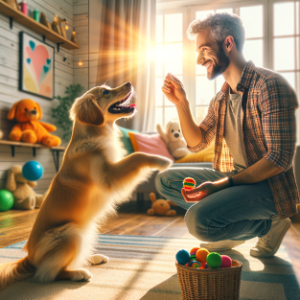
The Impact of Environment: Influencing Canine Learning and Behavior
Even the most effective training methods can fall short if the environmental context isn’t conducive to learning. The environment in which a dog learns plays a pivotal role in shaping its behavior, as numerous factors—including structure, routine, and exposure to various stimuli—can significantly influence the learning process. In this section, we will explore how an environment can be optimized for effective canine learning and what pet owners and trainers should consider.
The Role of Structure in Learning
Structure is instrumental in enabling dogs to learn effectively. An organized environment reduces distractions and provides clear expectations for behavior. Here are ways to establish structure:
- Consistent Space: Designate specific areas for training and play. A clutter-free space promotes focus and minimizes distractions. For instance, if your training sessions always occur in the living room, this can become a conditioned learning area for your dog.
- Routine and Schedule: Dogs thrive on predictability and routine. Establish a daily schedule for feeding, walks, and training sessions. Having a set routine helps dogs anticipate activities and be more responsive during training sessions, enhancing their learning experience.
- Clear Commands and Signals: Use consistent cues and commands in the same tone and manner to avoid confusion. Any variation can lead to misunderstandings, inhibiting the learning process.
The Importance of Routine
Beyond just structure, routines create a rhythm that promotes effective learning for dogs. Here’s how to leverage routines to enhance your dog’s training:
- Timing is Everything: Regularly scheduled training sessions, ideally when your dog is most attentive (usually after exercise), will help your dog develop a conditioned response to training cues.
- Daily Learning: Incorporate training into everyday life. For example, practice “sit” before mealtime or “stay” before going outside for a walk. This reinforces routine and ensures that training happens seamlessly throughout your day.
- Consistency with Corrections: If a certain behavior isn’t acceptable, consistently correct it every time it occurs within the routine. Consistent responses lead to clearer expectations, vital for successful learning.
Exposure to Varied Stimuli
A dog’s environment is constantly filled with stimuli that can either support or hinder learning. Exposure to varied stimuli enhances a dog’s adaptability and ability to learn in different contexts. Here are ways to manage exposure:
- Controlled Exposure: Gradually introduce your dog to new sights, sounds, and experiences in a controlled manner. For instance, if you’re preparing your dog for a busy park environment, start with quiet, less stimulating settings and progressively work toward busier areas.
- Socialization Opportunities: Socializing your dog with other dogs and people can provide invaluable learning experiences. Incorporating trips to dog parks or training classes can expose your dog to diverse interactions.
- Enrichment Activities: Utilize puzzles, toys, or games that challenge your dog. Enrichment stimulates cognitive function and encourages problem-solving skills. For example, using treat-dispensing toys can motivate dogs to figure out how to retrieve their rewards, enhancing learning through play.
Real-World Examples: Environment in Action
To illustrate the impact of the environment on canine behavior and learning, let’s dive into a couple of real-world examples:
- Example 1: Shelter Dogs and Learning: Dogs in shelters often exhibit different learning behaviors than those in stable home environments. The unpredictable and stressful conditions of shelters can hinder learning. Recent research has shown that the involvement of volunteers in structured training sessions significantly improves behavior and adoptability. By providing an organized routine and positive exposure, shelter dogs can learn better and become more sociable.
- Example 2: Home-Based Training: A pet owner found that their dog would refuse to follow commands outside, even after successful training at home. After analyzing the situation, they realized that the distractions of the surrounding environment—loud traffic and bustling people—were overwhelming the dog. By transitioning outdoor training to a quieter area initially and gradually introducing more stimuli, the dog began to respond positively to commands outdoors.
Conclusion
The environment in which a dog learns plays a crucial role in shaping its behavior and the effectiveness of training methods. By establishing a structured space, creating a routine, and thoughtfully exposing dogs to various stimuli, pet owners and trainers can foster an environment conducive to learning.
Optimizing your dog’s environment will not only aid in training and behavior modification but will also enhance the overall bond between you and your furry companion. Incorporate these elements into your training strategy, and watch how your dog flourishes in its learning journey.

Understanding Behavior Triggers
When it comes to dog behavior, one crucial aspect that every pet owner should be aware of is the role of behavior triggers. Recognizing these cues can dramatically change the way you approach training and ensure a harmonious relationship between you and your furry friend. In this section, we will identify common behavioral triggers that can affect a dog’s actions, especially relating to stressors that might cause fear or aggression, and address the importance of understanding these triggers in the training process.
Common Behavior Triggers in Dogs
Every dog is a unique individual with its own set of experiences, fears, and preferences. Understanding that triggers vary across dogs is essential. Here are some common triggers that can significantly influence a dog’s behavior:
- Environmental Changes: Dogs are sensitive to changes in their surroundings. Moving to a new home, rearranging furniture, or even changing the household schedule can unsettle your pet.
- Example: A dog might bark excessively or hide when they hear unfamiliar sounds in a new environment.
- Social Interactions: The way a dog reacts to other animals and humans can be a decisive factor in their behavior. Over-socialization or lack of socialization often leads to stress, fear, and even aggression.
- Example: A dog that has not been properly socialized may exhibit fearful reactions to strangers or other pets.
- Past Trauma or Negative Experiences: Dogs with a history of abuse, neglect, or adverse experiences can develop extreme reactions to certain stimuli.
- Example: A shelter dog may flinch or cower at sudden movements or sharp noises due to past traumas.
- Physical Discomfort: Pain and discomfort can lead to misbehavior. Dogs suffering from ailments may become irritable, aggressive, or withdrawn.
- Example: If a dog is sick or injured, they may react aggressively when approached, even by their owners.
- Resource Guarding: Dogs can become aggressive if they perceive their food, toys, or space as threatened. This is often a learned behavior.
- Example: A dog might growl or snap if approached while eating or playing with a toy, indicating their need to protect valuable resources.
The Importance of Recognizing Triggers in Training
Understanding these triggers is not just about managing behaviors; it’s integral for effective and compassionate dog training. Recognizing what causes stress, fear, or aggression allows you to tailor your training strategies. Here’s why this is essential:
- Prevention of Misbehavior: By identifying triggers, pet owners can anticipate and mitigate the chances of aggressive or fearful reactions. Avoiding known triggers during training can ensure a safer and calmer environment for your dog.
- Creating a Positive Learning Environment: Training dogs in settings that reduce possible stressors enhances their ability to focus and learn. Reducing external stimuli during training can lead to better outcomes.
- Building Trust and Confidence: Acknowledging and addressing your dog’s triggers fosters trust. When a dog learns that they can feel safe and secure, their ability to learn improves, and they build a positive association with training sessions.
- Customized Training Techniques: Tailoring training methods to individual needs can lead to better results. For example, using more gradual exposure techniques for a fearful dog is often more effective than forcing them into intimidating situations.
Actionable Tips for Recognizing and Managing Triggers
- Observe Body Language: Become familiar with canine body language. Signs of stress, such as whining, tucking their tail, or licking their lips, indicate a trigger might be present.
- Keep a Journal: Document situations that provoke negative reactions to better understand patterns in your dog’s behavior. This record helps identify specific stressors and triggers over time.
- Gradual Exposure: If your dog is fearful of specific triggers, approach exposure gradually. Start from a distance where they feel safe and slowly decrease the distance over time as they become more comfortable.
- Use Counter-Conditioning: Pairing positive experiences with the triggers can help to change emotional responses. For example, if a dog is scared of thunderstorms, giving treats during a storm can create positive associations.
- Consulting Professionals: If your dog exhibits aggressive behaviors that are difficult to manage, enlisting the help of a professional trainer or behaviorist can provide valuable insights and effective strategies tailored to your dog’s specific needs.
Conclusion
Understanding behavior triggers plays a pivotal role in shaping a well-adjusted, happy dog. By recognizing and addressing these triggers, pet owners can prevent problems before they escalate, create a safe and positive environment, and build stronger bonds with their furry companions.

Canine Communication: Decoding Your Dog’s Body Language, Vocalizations, and Facial Expressions
While understanding how dogs learn is paramount, equally important is recognizing how they communicate. Canine communication encompasses a blend of body language, vocalizations, and facial expressions, allowing dogs to convey their feelings and intentions to humans and other dogs. Understanding these cues is essential for effective training, enhancing your relationship with your furry friend, and maintaining harmony in multi-dog households. Let’s dive into the intricacies of canine communication.
The Role of Body Language in Canine Communication
Dogs are masters of body language, relying heavily on their physical movements and posture to communicate their thoughts and feelings. Here are some key body language signals to watch for:
- Tail Position: A wagging tail often indicates excitement, but the position matters too. A tail held high and wagging enthusiastically usually means happiness, while a low wag could signal submission or insecurity.
- Ears: Ears that stand erect suggest alertness or curiosity, whereas ears pinned back may indicate fear or submission. Observing these nuances can provide insight into your dog’s emotional state.
- Posture: A relaxed dog may lie down with their belly exposed, showing trust, while a stiffened posture can signal anxiety or aggression. Watch for changes in posture when introducing your dog to new environments or people.
- Facial Expressions: Dogs possess a range of facial expressions that convey emotions. A relaxed open mouth typically signifies contentment, while bared teeth could signify aggression or fear. Look for the combination of facial expressions and body movements for a complete picture.
Vocalizations: The Sound of Communication
In addition to body language, dogs use vocalizations to express their emotions and intentions. Here are some common sounds and what they might indicate:
- Barking: Dogs bark for various reasons, including alerting to danger, seeking attention, or expressing excitement. Context is crucial; a bark when a stranger approaches may differ from a playful bark during playtime.
- Growling: While growling can indicate aggression, it can also serve as a warning. If your dog growls while playing, it might be a sign of excitement rather than a threat. Learning the context in which your dog growls is important for a proper interpretation.
- Whining: Whining often reflects anxiety or the desire for attention. If your dog whines during training, they may be expressing discomfort or seeking reassurance. Understanding the cause can help guide your response.
- Howling: Some dogs howl as a form of communication, especially those with strong vocal instincts, like hounds. Howling may express loneliness or call attention to a distant sound. Engage your dog with comforting words if howling becomes frequent.
Facial Expressions: The Window to Emotions
Facial expressions play a significant role in a dog’s communication, often revealing their emotional state and intentions. Here are some critical elements to observe:
- Eyes: Soft, relaxed eyes indicate a calm and friendly demeanor, whereas wide-open eyes or an intense stare may signal stress or aggression. Dogs that are constantly blinking or avoiding eye contact might feel threatened.
- Mouth: A relaxed mouth positioned in a loose “smile” often means a relaxed canine. Conversely, a tightly closed or snarled mouth can signify discomfort or aggression. Understanding these expressions allows for better emotional reading during interactions.
- Overall Head Position: A lowered head may indicate submission or fear, while a confident, elevated head may suggest curiosity or assertiveness. Observing the head position alongside other cues can provide valuable insight.
Recognizing Cues: The Path to Effective Training
Recognizing and interpreting these communication cues is vital for effective training. Here’s why:
- Improved Responsiveness: By understanding your dog’s signals, you can adjust your training approach to be more responsive to their needs. For example, if your dog appears anxious about a particular command, modifying your strategy can improve the learning experience.
- Builds Trust: Dogs that feel heard through their body language and vocalizations are more likely to trust their handlers. Training becomes a two-way communication channel rather than a one-sided instruction process.
- Address Behavior Issues: Miscommunication can lead to behavioral issues. By tuning into your dog’s cues, you can identify triggers for undesirable behaviors and implement intervention strategies before they escalate.
- Strengthens Relationships: Effective communication fosters a stronger bond. When your dog feels understood, they are more likely to engage positively with you and be open during training.
Practical Steps to Enhance Communication
Implement the following practical tips to enhance your understanding of canine communication:
- Observe Regularly: Spend time observing your dog’s body language, vocalizations, and facial expressions. Note the context in which different cues are displayed to understand their meanings better.
- Keep a Journal: Document your dog’s communication patterns and any corresponding behaviors. This helps identify specific triggers and behaviors in various situations.
- Practice Patience: Allow your dog to express themselves without rushing to intervene. Understanding comes with time and patience.
- Train Responsively: Incorporate canine communication cues into your training sessions. Adjust your methods based on your dog’s signals to promote a more responsive training environment.
- Encourage Socialization: Socialize your dog with other well-adjusted dogs. Learning from peers helps them read social cues more effectively.
Conclusion
Recognizing the subtleties of canine communication—through body language, vocalizations, and facial expressions—is crucial for effective dog training and fosters a deeper bond between pets and their owners. By enhancing your understanding of these channels, you can create a more harmonious relationship built on effective communication and trust.

Behavioral Modification Techniques: Addressing Undesirable Behaviors in Dogs
While we delve into the intricacies of canine learning and its foundational principles, it’s essential to tackle a significant aspect of training—behavioral modification. Often, our canine companions exhibit behaviors that may be undesirable or problematic, ranging from excessive barking to fear of certain stimuli. Fortunately, several effective behavioral modification techniques can help address these issues, particularly desensitization and counter-conditioning. Understanding and implementing these methods can foster a more harmonious relationship between you and your dog.
Understanding Behavioral Modification Techniques
Behavior modification techniques are designed to alter specific undesirable behaviors in dogs by using learning principles derived from behavioral psychology. Two of the most effective methods employed in these techniques are desensitization and counter-conditioning. Both rely on understanding your dog’s emotional responses and gradually modifying their behaviour through positive associations.
1. Desensitization: Gradual Exposure
Desensitization involves gradually exposing your dog to the stimulus that triggers their undesirable behavior, decreasing their sensitivity and response over time. The objective is to help your dog become more comfortable and less reactive to the stimulus. Here’s how it works:
- Identify Triggers: The first step is to identify what specifically causes your dog to exhibit undesirable behavior. It could be anything from loud noises (thunder, fireworks) to other dogs or unfamiliar people.
- Create a Hierarchy: Establish a hierarchy of exposure based on your dog’s response to the trigger, starting with situations that elicit minimal fear and gradually progressing to those that provoke a stronger reaction.
- Controlled Exposure: Begin exposing your dog to the trigger in a controlled manner. For instance, if your dog has a fear of thunderstorms, you might start with a recording of thunder played at a low volume while engaging your dog in a positive activity, such as playing or treating.
- Gradual Increase: Slowly increase the intensity and duration of the exposure as your dog becomes more comfortable. The key element is to ensure that your pet remains calm and relaxed during these sessions.
2. Counter-Conditioning: Changing Emotional Responses
Counter-conditioning complements desensitization by altering your dog’s emotional response to a triggering stimulus. Instead of merely getting used to an uncomfortable situation, counter-conditioning helps to replace the negative response with a positive one.
- Identify the Trigger: Similar to desensitization, start by identifying what bothers your dog. For instance, if your dog becomes aggressive toward strangers, this behavior indicates a fear-based reaction.
- Positive Associations: Use treats, toys, or praise to create a positive association with the trigger. For example, if a stranger approaches your dog, offer your pet a treat to help them associate the presence of the stranger with something pleasurable.
- Gradual Introduction: Increase the proximity or intensity of the triggering event while maintaining a positive reinforcement strategy. This method enables your dog to develop new, positive associations as they encounter the feared stimulus.
- Consistency is Key: Just like desensitization, consistency is crucial for counter-conditioning to be effective. Regular practice helps solidify the newly formed positive associations in your dog’s mind.
Real-World Applications of Behavioral Modification
Behavioral modification techniques, particularly desensitization and counter-conditioning, have been effectively applied in several real-world scenarios:
- Fear of Loud Noises: Many dogs exhibit fear during thunderstorms. By using desensitization, an owner can play thunderstorm sounds at a low volume while rewarding their dog with treats. Over time, the dog becomes comfortable with the sounds and less fearful.
- Separation Anxiety: Dogs that experience anxiety when left alone can benefit from counter-conditioning. Owners can gradually introduce short departures while providing rewards for calm behavior, ultimately increasing the time spent away as the dog learns that being alone is a safe experience.
- Aggression Towards Other Dogs: Through controlled exposure and counter-conditioning, a dog that shows aggression can learn new behaviors when encountering other dogs. By pairing the sight of another dog with treats and praises, the dog can slowly adjust their emotional response instead of reacting with aggression.
Actionable Tips for Implementing Behavioral Modification Techniques
- Start Slow: Take your time during desensitization and counter-conditioning processes. During each session, observe your dog’s comfort level and progress gradually without rushing.
- Monitor Progress: Keep detailed notes on your dog’s reactions and improvements. This will help you recognize patterns and determine what works best for your canine companion.
- Utilize High-Value Rewards: Use treats that your dog truly loves to enhance motivation and foster positive connections during training sessions.
- Involve a Professional: If you find it challenging to manage these techniques on your own, don’t hesitate to consult a professional dog trainer or a certified behaviorist. They can provide guidance tailored to your dog’s specific needs.
- Be Patient: Behavioral modification takes time. Celebrate small wins and maintain a consistent approach to nurture your dog’s progress.
Conclusion
Behavioral modification techniques, such as desensitization and counter-conditioning, are invaluable for addressing undesirable behaviors in dogs. By utilizing these strategies, dog owners can effectively create a more relaxed and controlled environment for their pets. By patiently implementing these techniques, you can help your dog learn to cope with their fears or anxieties, ultimately transforming their responses into positive behaviors.

The Science of Habituation: Exploring Canine Habituation and Its Significance in Learning
Habituation is a fascinating concept in the realm of canine learning, one that can greatly enhance the training experience for both dogs and their owners. In simple terms, habituation refers to the process through which an animal gradually becomes accustomed to a stimulus after repeated exposure. This learning mechanism is crucial for dogs, helping them navigate their environments effectively and ultimately leading to smoother training experiences.
Let’s delve into the mechanics of habituation, its significance in the learning process, and real-world examples where it can be particularly beneficial for our canine companions.
What is Habituation?
Habituation occurs when a dog learns to ignore a stimulus that is neither harmful nor rewarding. This learning process is essential as it allows animals to focus on more relevant stimuli, thereby facilitating survival and social interaction. It’s a form of non-associative learning, distinguishing it from classical and operant conditioning where specific associations are made between stimuli and responses.
Key Aspects of Habituation
- Stimulus-Response Mechanism: With habituation, dogs may exhibit decreased responses to familiar stimuli over time. For example, a dog might initially react with excitement to the sound of the doorbell; however, with repeated exposure, it learns that the doorbell does not always indicate an exciting arrival.
- Short-Term vs. Long-Term Habituation: Habituation can be short-lived (temporary) or long-lasting (permanent). For instance, a dog might quickly adapt to a new home environment but may take longer to habituate to a new type of leash.
- Individual Variation: Not all dogs habituate at the same rate. Breed, temperament, age, and previous experiences can influence the speed and ability to habituate to various stimuli.
The Significance of Habituation in Training
Habituation plays a crucial role in a dog’s learning process, particularly in the following ways:
- Reduced Anxiety: Habituation can help alleviate fears and anxieties related to different situations or stimuli. For instance, a dog that is fearful of thunderstorms can benefit from gradual exposure to recorded thunder sounds at a low volume, allowing it to habituate to the noise without feeling threatened.
- Improved Focus: When distractions are present, such as other dogs barking or people talking, habituated dogs can learn to focus more effectively on their training sessions. This focus can enhance learning outcomes and retention of new commands.
- Facilitating Socialization: Habituation can promote social behaviors by allowing dogs to become accustomed to interacting with various people and environments. For example, taking a dog to a busy park regularly will help it become desensitized to the noise and hustle and bustle, making it more comfortable in social settings.
- Enhancing Training Techniques: Understanding habituation allows trainers to use it strategically in their sessions. For instance, if a dog exhibits fear towards a specific item (like a vacuum cleaner), gradually introducing this object in a controlled and non-threatening manner can help the dog learn to ignore it over time.
Examples of Beneficial Habituation Scenarios
Here are some situations where habituation can play a positive role in a dog’s life:
- Noise Habituation: If you have a puppy, playing recordings of various sounds (traffic, fireworks, sirens) at a low volume can help desensitize them. This exposure can prevent panic in adult life situations where these noises occur.
- New Environments: When introducing your dog to new places, gradual exposure can ease the transition. For example, visiting a dog park should start with quiet times on less busy days, allowing your pup to encounter the environment bit by bit.
- Handling and Grooming: Dogs can be sensitive to handling. Gradual exposure to being brushed, having their nails trimmed, or visiting the vet can help them become accustomed to these experiences and significantly reduce stress during grooming or medical procedures.
- Meeting New People or Dogs: When socializing a dog, allowing it to meet new people or other dogs slowly can help. Instead of forcing interactions, allowing the dog to approach at its own pace reinforces positive experiences and promotes confidence.
- Travel and New Experiences: Developing a habit of regular travel with a dog ensures they become accustomed to car rides, new smells, and various types of environments. Consistent exposure helps them to not view travel as a stressful situation.
Actionable Tips for Implementing Habituation in Training
To effectively incorporate habituation into your dog training regime, consider the following actionable tips:
- Gradual Exposure: Introduce your dog to new stimuli slowly and in manageable doses to avoid overwhelming them.
- Consistency: Regularly expose your dog to stimuli, ensuring that it can become comfortable and eventually habituate.
- Create Positive Associations: Whenever possible, pair the stimulus with positive experiences such as praise, treats, or play to build a more positive perception and facilitate habituation.
- Be Patient: Remember that each dog is unique and may take different amounts of time to habituate. Avoid rushing the process; patience is key!
- Monitor Behavior: Pay close attention to your dog’s body language. Signs of stress or discomfort should trigger a removal from the situation until they are able to approach it again positively.
Conclusion
Understanding the science of habituation provides invaluable insights into canine learning and behavior. This knowledge equips pet owners and trainers with the tools they need to address anxieties, focus training, and socialize dogs effectively. By incorporating habituation techniques, we can create a more harmonious relationship with our furry friends, making training an enjoyable experience for both parties.

The Role of Genetics: Influence on Canine Behavior and Learning Capabilities
In discussing how dogs learn and behave, one cannot overlook the crucial role of genetics. Just as humans inherit certain traits that shape our personalities and behaviors, dogs, too, come with inherited characteristics influenced by their breed and lineage. Understanding the genetic factors that contribute to canine behavior and learning capabilities can help trainers and dog owners customize their training approaches for success.
Why Genetics Matter in Canine Behavior
Genetics often dictate not just physical appearance but also behavioral tendencies and learning abilities in dogs. Here are some reasons why genetics play a pivotal role in canine behavior:
- Inherent Traits: Different breeds have predisposed traits; for example, herding breeds like Border Collies are typically more energetic and need more exercise than, say, a bulldog.
- Cognitive Abilities: Genetics can influence a dog’s problem-solving capabilities and ability to learn commands quickly. Breeds like Poodles and German Shepherds are often recognized for their intelligence.
- Temperament: Breeds may exhibit aggression or sociability based on genetic traits. Understanding these predispositions can prevent behavioral issues and aid in proper socialization strategies.
The Impact of Breed Characteristics on Training Needs
Canine behavior varies not just from dog to dog but also significantly across breeds, impacting their training needs. Here’s how different breed characteristics can inform training strategies:
- High-Energy Breeds:
- Example: Breeds like Labrador Retrievers and Vizslas require extensive exercise and mental stimulation. If not properly exercised, they might become bored and develop destructive behaviors.
- Training Strategy: Incorporate physical exercise into training sessions, using methods like agility training or prolonged fetch sessions to engage both body and mind.
- Intelligent Breeds:
- Example: Breeds such as German Shepherds and Border Collies are known for their high intelligence and capacity for advanced learning.
- Training Strategy: Utilize complex commands and activities that challenge them mentally. Consider training classes that focus on problem-solving and obedience to keep them stimulated.
- Stubborn Breeds:
- Example: Breeds like the Bulldog or Basset Hound may exhibit stubbornness when trained.
- Training Strategy: Patience and employing varied training techniques, including positive reinforcement and gradual skill-building, can help manage these traits effectively.
- Sensitive Breeds:
- Example: Breeds like the Whippet and Cavalier King Charles Spaniel tend to be more sensitive and may not respond well to harsh training methods.
- Training Strategy: Use gentle, positive reinforcement strategies and maintain a calm, reassuring demeanor to avoid stressing the dog.
- Working Breeds:
- Example: Breeds like Rottweilers and Doberman Pinschers are bred for specific tasks like guarding.
- Training Strategy: Incorporate structured programs that include obedience training, socialization, and activities that channel their working instincts, such as tracking or scent work.
Understanding Learning Preferences Based on Genetics
Just as each dog is unique, their genetics can also inform their individual learning preferences. Recognizing these preferences can enhance training sessions significantly:
- Visual Learners: Many herding breeds respond well to visual cues. Use hand signals in conjunction with verbal commands to aid in their learning.
- Auditory Learners: Certain breeds, such as Beagles, may respond better to sound signals. Incorporating a variety of vocal cues can enhance their understanding and response.
- Tactile Learners: Some breeds, especially those with a strong desire to work closely with humans, may respond better to physical cues and touch. Incorporating petting and gentle guidance can facilitate learning.
Actionable Tips for Tailoring Training Based on Genetics
With an understanding of how genetics influence canine behavior and learning, here are actionable tips for owners and trainers:
- Assess Behavioral Tendencies: Spend time observing your dog’s natural instincts and traits based on their breed. Tailor training sessions that accommodate these behavioral trends.
- Engage in Breed-Specific Activities: Explore activities that reflect your dog’s breed characteristics. For instance, herding breeds may enjoy activities like frisbee or agility courses, while toy breeds might excel in trick training.
- Communicate Effectively: Use a blend of commands, visuals, and praise to establish clear communication that resonates with your dog’s learning style and genetic predispositions.
- Monitor Stress and Anxiety Levels: Pay attention to your dog’s stress indicators and adjust training techniques as necessary, especially for breeds sensitive to pressure or harsh correction.
- Incorporate Play: Mix fun with training! Use play as a reward to enhance engagement during training sessions, making it enjoyable while reinforcing learning.
Conclusion
Genetics significantly influence canine behavior and learning capabilities. Understanding these genetic factors allows trainers and pet owners to customize their approaches to facilitate successful training and create a harmonious relationship with their four-legged friends. By recognizing and leveraging breed characteristics, we can enhance training effectiveness and adapt to the unique needs of our dogs.

Tools for Effective Training: Highlighting Training Tools and Equipment for Teaching Dogs
As we delve deeper into the realm of dog training, it’s essential to equip ourselves with the right tools that can empower both trainers and dogs alike. Effective training tools not only enhance the learning experience for our canine companions but also streamline the process for humans, ensuring clarity and fostering positive behavioral development. In this section, we’ll explore various training aids, discussing their benefits, drawbacks, and practical applications in the world of canine education.
The Best Training Tools for Dogs
When selecting training tools, it’s important to consider your training style, your dog’s temperament, and the specific behaviors you wish to reinforce or modify. Below is a comprehensive list of popular training aids:
1. Clicker Training Devices
Overview: Clicker training employs a small handheld device that makes a distinct “click” sound to mark desired behaviors.
Pros:
- Clear Communication: The click sound provides an immediate indicator of the desired behavior.
- Precision: Enables high accuracy in marking behaviors, which is critical for effective training.
- Positive Reinforcement: Clickers work well in conjunction with treats, providing rewards for good behavior.
Cons:
- Initial Learning Curve: Dogs may require some time to understand the connection between the click and the reward.
- Not Always Portable: Some clickers may be too bulky for outdoor training sessions.
Application: Using a clicker while teaching your dog to sit or stay can shape their understanding of commands through immediate feedback. The sound of the click signals that they’ve done something right.
2. Harnesses and Leashes
Overview: Training harnesses and leashes are crucial for controlling and guiding dogs during walks and training sessions.
Pros:
- Better Control: Harnesses can help control pulling and jumping, particularly for strong or energetic dogs.
- Training Reinforcement: Certain harnesses (like no-pull designs) help teach dogs to walk calmly.
- Comfort: Reduces strain on the dog’s neck compared to collar-only setups.
Cons:
- Cost Variability: High-quality harnesses can be pricier than standard collars or leashes.
- Potential Misuse: Poorly designed harnesses may cause chafing or improper fitting.
Application: Harnesses can be instrumental in teaching loose-leash walking. When your dog darts ahead, stopping can help convey the message that pulling results in a halt to the walk, reinforcing desired behavior.
3. Training Treats
Overview: Treats serve as rewards for desired behaviors, enhancing the motivation for learning.
Pros:
- Variety: Available in numerous flavors and textures, catering to various canine preferences.
- High Value: Small, tasty treats help capture dogs’ attention during training.
- Encouragement of Positive Behavior: Using treats as rewards for good behavior strengthens the bond between the dog and trainer.
Cons:
- Weight Gain: Excessive treat use can lead to weight issues in dogs.
- Limited Effectiveness with Discerning Dogs: Some dogs may become disenchanted with standard treats if they prefer specific options.
Application: When teaching commands like “come” or “leave it,” using high-value treats can effectively entice your dog to comply and develop a positive association with the commands.
4. Training Crates
Overview: Crate training can help with housebreaking and creating a safe space for dogs.
Pros:
- Safety: Crates provide a secure environment when the owner is unavailable for supervision.
- Establishes Boundaries: Helps dogs learn where it’s acceptable to rest and reduce destructive behaviors.
- Effective for Travel: Crates can ease transport and ensure safety during car rides.
Cons:
- Potential for Negativity: If misused, a crate can become a place of anxiety rather than safety.
- Adjustment Period: Some dogs may take time to acclimate to crate life.
Application: Use the crate for housebreaking by taking your dog outside immediately after they are released, reinforcing the connection between the crate and the desired behavior of relieving themselves outdoors.
5. Long Line Leashes
Overview: Long lines are extended leashes that allow for greater freedom while retaining control during training sessions.
Pros:
- Versatile Training Tool: Ideal for recall training and teaching off-leash behavior in a safe manner.
- Increased Range: Dogs can explore more freely while still being manageable for the trainer.
- Enhanced Safety: Helps prevent dogs from wandering into dangerous situations while giving more freedom.
Cons:
- Tangles: Long lines can easily become tangled in outdoor environments.
- Limited Use: Not ideal for all situations or settings, such as crowded areas.
Application: Long lines can facilitate recall training in open spaces. If a dog does not respond to a call, a gentle tug on the line can help guide them back, reinforcing the association between responding and rewards.
Conclusion
As we navigate through canine learning, choosing the right tools is a vital step toward achieving effective training outcomes. From clickers and harnesses to treat rewards, each tool offers unique advantages and considerations. Ensuring that you select the most suitable training aids will not only enhance your dog’s learning experience but also solidify the bond you share.
When training your dog, remember that the right tools can make the journey smoother and more enjoyable for both you and your furry friend.

Troubleshooting Common Issues: Addressing Learning and Behavioral Problems in Dogs
While understanding canine learning is fundamental, many dog owners encounter specific behavioral challenges that require focus and attention. Issues like separation anxiety and excessive barking can complicate the training process and impact the lives of both pets and owners. In this section, we will explore these common issues, their underlying causes, and effective solutions to help you create a harmonious home for you and your furry companion.
Identifying Separation Anxiety
Separation anxiety is a distressing issue that occurs when dogs become overly attached to their owners and are unable to cope with being left alone. This can result in destructive behavior, incessant barking, and even accidents indoors. Recognizing the signs of separation anxiety is crucial for effective intervention.
Common Signs of Separation Anxiety:
- Excessive barking or howling when left alone
- Destructive behaviors such as chewing furniture or digging at doors
- Pacing or restlessness when the owner prepares to leave
- House soiling, even if the dog is otherwise house-trained
- Trying to escape, including injuring themselves in the process
Solutions for Separation Anxiety
1. Gradual Desensitization
One effective approach to alleviating separation anxiety is to gradually desensitize your dog to your departures. This involves the following steps:
- Start with short absences. Leave your pet alone for just a few minutes and gradually increase the time.
- Provide a special treat or toy that your dog only gets when you leave to help create a positive association with your absence.
2. Create a Comfortable Space
Designate a safe and comfy area for your dog to spend time alone. This area should have:
- Familiar items, like their favorite blanket or toys
- Comforting scents, such as a piece of your clothing
- Minimal distractions to help your dog relax
3. Employ Calming Techniques
Consider using tools specifically designed to alleviate anxiety in dogs, such as:
- Calming chews or treats containing natural ingredients (like chamomile or valerian root)
- Thundershirts or anxiety wraps, which provide gentle pressure to create a calming effect
- Music or white noise machines to mask outside noises that may trigger anxiety
Addressing Excessive Barking
While barking is a natural form of communication for dogs, excessive barking can become disruptive both for families and neighbors. Understanding the reasons behind barking is crucial before implementing solutions.
Common Triggers for Excessive Barking:
- Boredom or lack of mental stimulation
- Fear or anxiety triggered by new experiences or stimuli
- Territorial behavior in response to strangers or other animals
- Attention-seeking, often in an effort to engage their owners
Solutions for Excessive Barking
1. Provide Sufficient Exercise and Mental Stimulation
Engaging your dog in regular physical activity can help reduce barking caused by boredom. Consider:
- Daily walks or jogs
- Interactive toys that challenge your dog to think and play
- Training sessions that incorporate commands they love, helping to burn off excess energy
2. Reinforce Quiet Behavior
Teach your dog to only bark when appropriate by rewarding them for being quiet. Here are some steps:
- When your dog barks, let them do so for a few seconds, then give them a cue like “enough” or “quiet.”
- When they stop barking, even briefly, reward them immediately with a treat.
- Consistently reinforce this behavior to help your dog understand the difference between excessive barking and appropriate vocalization.
3. Identify Triggers
Understanding what causes your dog to bark excessively can help you address these triggers effectively. Take note of specific situations when your dog barks, and consider:
- Reducing exposure to street noise by using curtains or closing windows
- Gradually introducing them to new stimuli in a controlled environment, rewarding calm behavior
Conclusion
By recognizing common behavioral issues such as separation anxiety and excessive barking, dog owners can take proactive steps toward creating a peaceful coexistence with their pets. Using gradual desensitization techniques, providing adequate exercise, and reinforcing quiet behaviors can significantly enhance your dog’s training experience.

The Importance of Consistency in Dog Training and Behavioral Modification
When it comes to dog training and behavior modification, consistency isn’t just important; it’s foundational. Just as humans benefit from regular routines and clear expectations, dogs thrive when training methods and commands are reinforced with uniformity. In this section, we will uncover how consistency plays a vital role in effective dog training and delve into strategies that both dog owners and trainers can implement to maintain consistency in their approaches.
Why Consistency Matters
Consistency in dog training holds several key benefits that translate into effective behavioral change:
- Reinforced Learning: Dogs learn through repeated experiences. When commands, cues, and rewards are presented consistently, dogs are more likely to retain and execute the desired behaviors.
- Reduced Confusion: Inconsistent commands and signals can lead to confusion for dogs. For instance, if one family member commands “come” while another says “here,” dogs may become unsure about what is expected of them.
- Strengthened Bonds: Training consistency helps establish trust. A dog owner who consistently applies rules and expectations fosters a safe environment, reinforcing the dog’s respect for their owner.
- Faster Progress: When training methods are uniform, dogs can reach milestones quickly. Consistency ensures they understand what they need to do to earn rewards, expediting their learning process.
How to Achieve Consistency in Training
To harness the power of consistency in training and behavioral modification, both owners and trainers must adopt a unified approach. Here are some actionable strategies:
- Develop Clear Commands and Cues:
Each command should be distinct and easy to say. Use simple, one-word cues whenever possible. For example, choose “sit” rather than “sit down,” and ensure all family members use the same cues consistently. - Establish Training Routines:
Create a schedule for training sessions that includes regular times for practice. Establishing a routine helps dogs anticipate when they will be trained, enhancing their focus and enthusiasm. - Maintain Consistent Reinforcement:
Rewards should be consistently delivered whenever the desired behavior is shown. This consistency can include verbal praise, treats, or playtime, depending on what motivates your dog. - Use the Same Training Tools:
Whether using a clicker, treats, or a specific type of leash, using the same tools across all training sessions helps dogs recognize and understand cues more effectively. - Involve the Whole Family:
Ensure that everyone in the household uses the same signals and approaches to training. Consistency from all family members reinforces learning and makes it easier for the dog to understand expectations. - Apply Rules Uniformly:
Ensure that all household members enforce training rules consistently. For example, if a dog is not allowed on the couch, everyone must uphold that rule. Inconsistency can lead to confusion and misbehavior.
Real-World Examples of Successful Consistency
Let’s take a look at some practical scenarios that showcase how consistency affects canine behavior:
- Lack of Consistency in Commands: A family with children might use different commands for the same action, like “lie down” versus “down.” Over time, the dog may become confused and resistant to following commands. In contrast, a family that agrees to use “down” universally will likely see faster results in training.
- Implementing a Consistent Routine: Consider a dog owner who sets aside specific times each day for training. By maintaining this routine, the dog recognizes that training is a part of their daily activities. As a result, the dog may approach training excitedly, knowing it is a regular and dependable part of their schedule.
- Constant Enforcement of Rules: Imagine a dog trained to stay off the furniture, yet one family member allows them to jump up now and then “just for a moment.” This inconsistency can easily undo months of training, leading to confusion and frustration on both sides.
The Role of Consistency in Behavioral Modification
For dogs with behavioral issues such as excessive barking, jumping, or aggression, consistency is particularly crucial. Owners and trainers must apply the same strategies each time the behavior occurs to halt or redirect undesirable actions. Here’s how:
- Identifying Triggers: Look for consistent patterns that lead to unwanted behavior. If a dog barks at strangers, everyone should consistently follow a similar approach when they encounter a person passing by.
- Using the Same Correction Techniques: If a dog jumps up for attention, everyone must respond with the same correction. For example, consistently turning away and ignoring the dog until all four paws are on the ground can help instill the desired behavior.
- Monitoring Progress Together: Regularly check in with every family member about the dog’s progress. Sharing observations regarding what’s working and what’s not allows for unified adjustments to training.
Conclusion
The importance of consistency in dog training and behavioral modification cannot be overstated. A consistent approach reinforces learning, reduces confusion, and ultimately leads to a more harmonious relationship between dogs and their owners. As you reflect on your own training practices, consider what steps you might take to ensure a more cohesive and consistent approach.
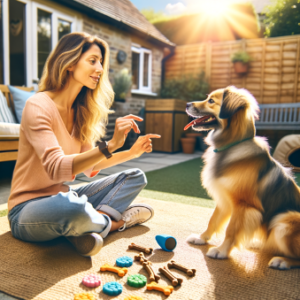
Lifelong Learning for Dogs: Keeping Your Canine Engaged Through Ongoing Training
While effective training lays the foundation for a well-behaved dog, it’s crucial to recognize that learning is not confined to early development—it’s a lifelong journey. Many pet owners mistakenly believe that once their dogs have mastered basic commands or behaviors, there’s no need for further learning. However, ongoing training and mental stimulation are essential for keeping dogs engaged and fulfilled throughout their lives. In this section, we will explore the importance of lifelong learning for dogs and provide practical strategies to advocate for their continual mental development.
The Benefits of Lifelong Learning for Dogs
Continued education can significantly enhance a dog’s quality of life. Here are several compelling reasons to embrace lifelong learning for your furry friend:
- Mental Stimulation: Just like humans, dogs thrive on stimulation. Engaging their minds through new tricks, puzzles, and games can prevent boredom and destructive behaviors.
- Behavioral Maintenance: Regular training helps reinforce previously learned commands, ensuring that dogs remain consistent in their behavior over time.
- Strengthened Bonds: Spending time training and learning with your dog can deepen your relationship, promoting trust and reliability between pet and owner.
- Increased Confidence: Teaching new skills can boost your dog’s self-esteem. Success in training tasks builds confidence, making them more adaptable to new situations.
- Socialization Skills: Ongoing training often involves exposing your dog to various environments, people, and other dogs, which enhances their social skills.
Practical Ways to Promote Lifelong Learning
To keep your dog engaged and learning throughout their life, consider these actionable strategies:
- Regular Training Sessions: Dedicate a few minutes each day or week to practice basic commands, tricks, or new skills. Even short sessions can be effective, as dogs learn better in bite-sized increments.
- Incorporate Advanced Training: Once your dog has mastered the basics, consider enrolling them in advanced obedience classes or specialized training programs. Activities such as agility training, scent work, or therapy dog certification can offer new challenges and learning opportunities.
- Puzzle Toys and Games: Invest in interactive toys that stimulate your dog mentally. Puzzle feeders, treat-dispensing toys, and brain games challenge dogs to solve problems and keep their minds sharp.
- Teach Trick Training: Activities like teaching your dog to roll over, play dead, or even put your shoes away can be entertaining for both you and your dog. Use positive reinforcement techniques to make the process enjoyable.
- Participate in Dog Sports: Engaging in dog sports not only offers a fantastic outlet for energy but also teaches various skills that require teamwork. Whether it’s flyball, tracking, or herding, dog sports can be a compelling way for your dog to learn continuously.
- Social Learning with Playdates: Schedule regular playdates with other well-trained dogs. This can serve as a wonderful opportunity for your dog to learn from peers in a social, engaging environment.
Real-World Examples of Lifelong Learning
To illustrate the impact of lifelong learning, consider the cases of two different dogs:
- Max, a ten-year-old Golden Retriever, was initially trained as a service dog. However, after retirement, his owner kept him engaged with classes in nose work. Not only did this stimulate his mind, but it also kept him physically fit. The continued challenge prevented behavioral issues like anxiety, demonstrating the positive effects of ongoing learning.
- Luna, a five-year-old beagle, was well-mannered but started displaying signs of boredom when left alone. Her owner introduced puzzle toys and trick training, significantly reducing destructive habits. By continually challenging Luna mentally, her owner was able to enrich her life, thus enhancing her overall behavior and happiness.
Conclusion
Embracing the concept of lifelong learning for dogs enriches their lives profoundly, making them healthier, happier, and more well-adjusted companions. By consistently engaging in training, providing mental stimulation, and exploring new activities, owners can ensure their pets thrive at every stage of life.
As you embark on this journey of continuous learning with your dog, remember the joy that comes from teaching and learning together.

Conclusion
Understanding canine learning enhances not only our capacity to train dogs effectively but also deepens the bond we share with them. By embracing various learning theories—classical conditioning, operant conditioning, social learning, and cognitive skills—we can tailor our training strategies to suit the individual needs of our canine companions.
Key Takeaways:
- Effective Training: A clear grasp of how dogs learn allows for the selection of appropriate training methods, leading to faster and more lasting results.
- Communication Improvement: Enhancing the communication between dogs and owners helps in conveying cues that resonate with dogs’ learning styles.
- Bond Strengthening: A positive training experience rooted in understanding can foster greater trust and respect between an owner and their dog.
- Behavior Modification: Utilizing the principles of learning can significantly assist in correcting undesirable behaviors, resulting in a more harmonious household and safer environment.
As you embark on your dog training journey, remember: It’s an ongoing process that requires patience, consistency, and a genuine connection with your dog.
news via inbox
Nulla turp dis cursus. Integer liberos euismod pretium faucibua


